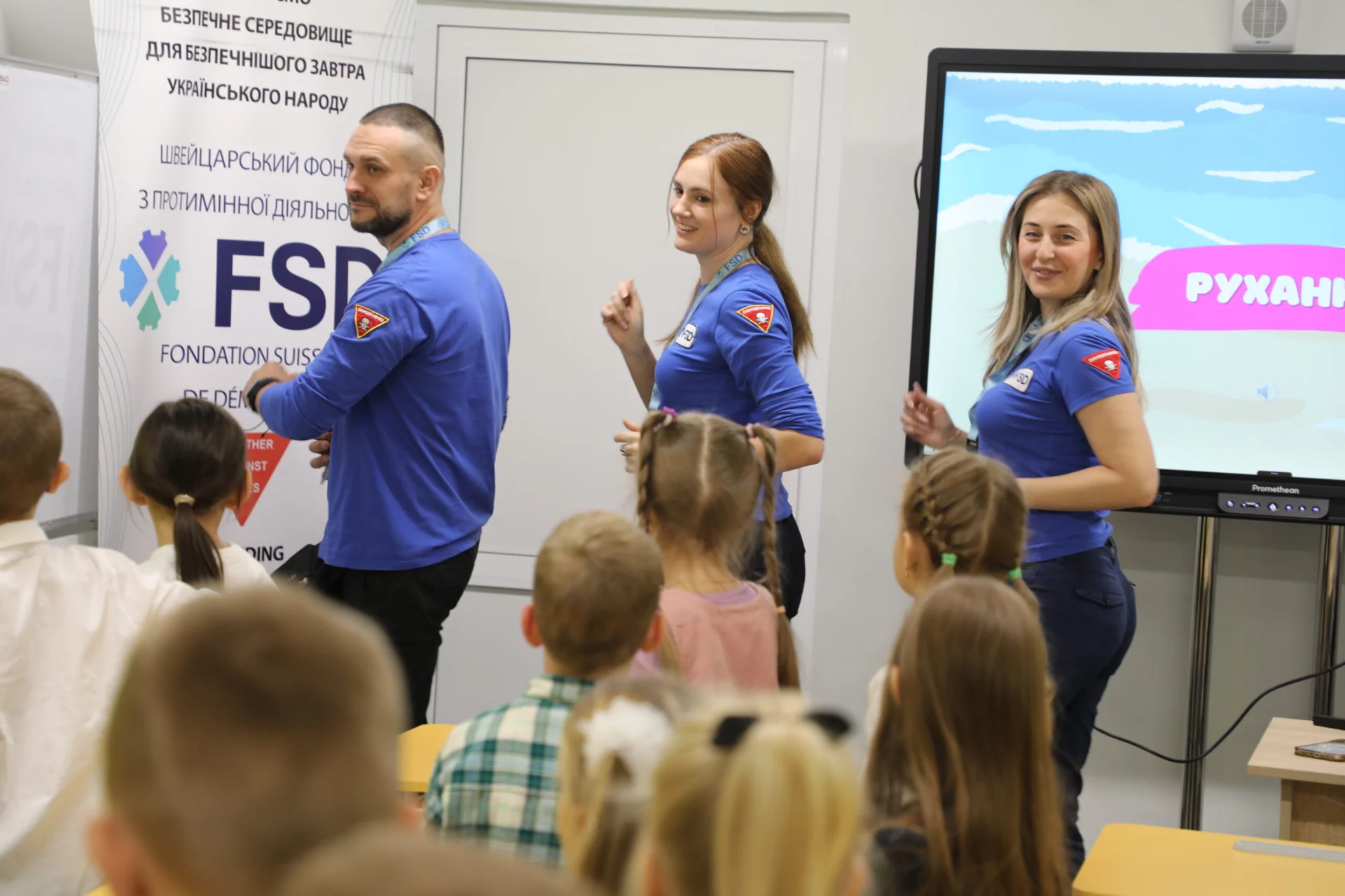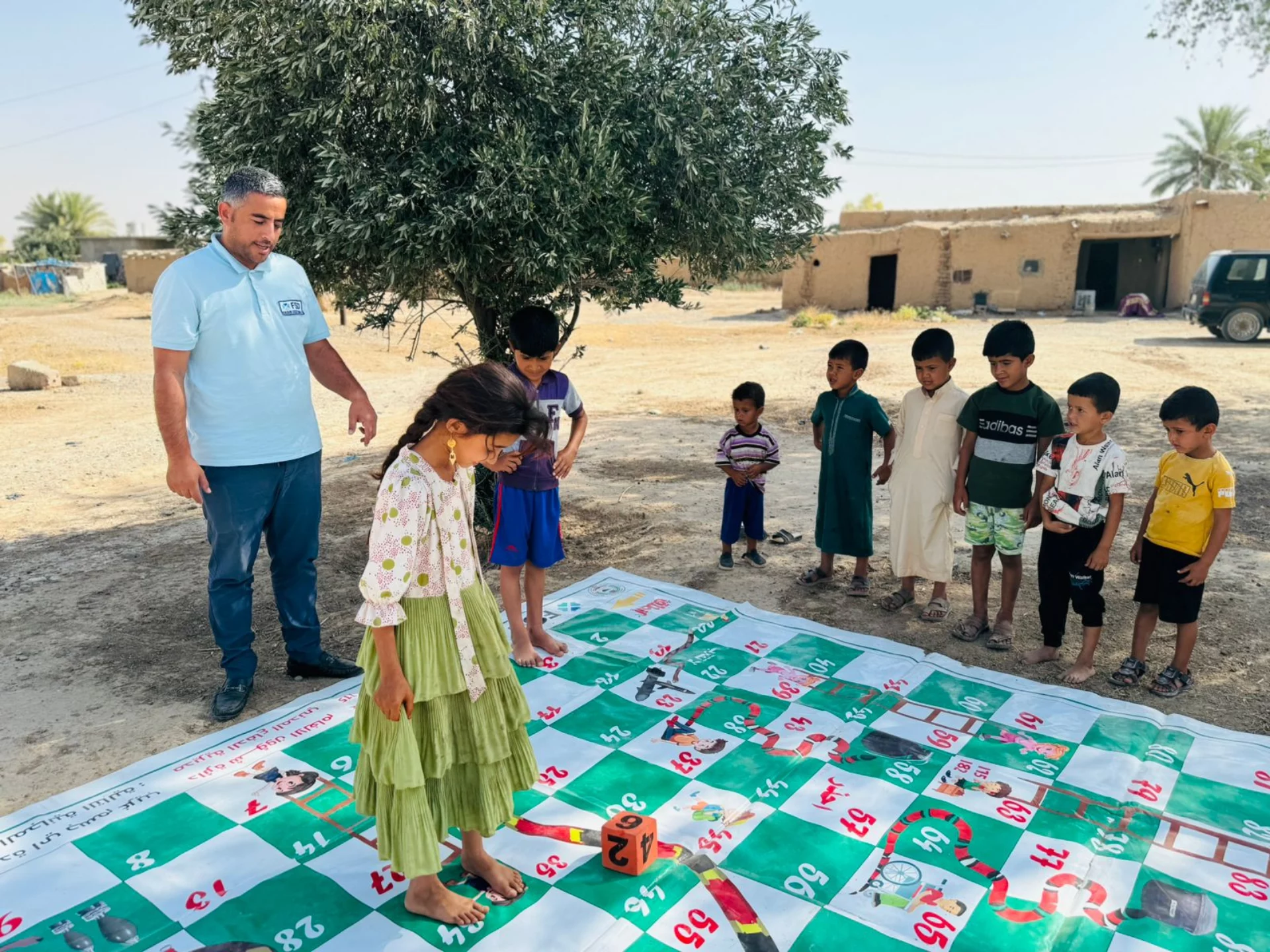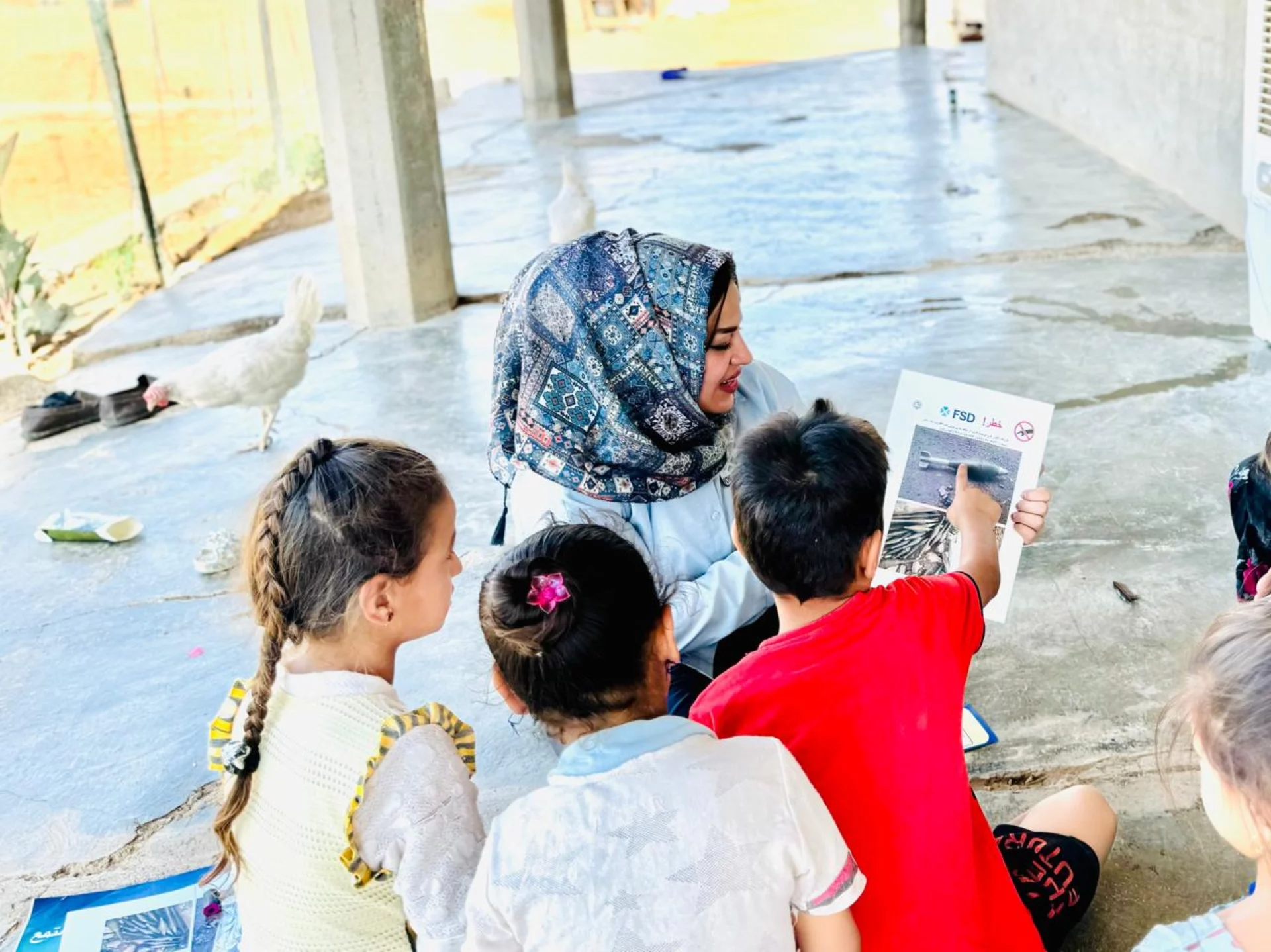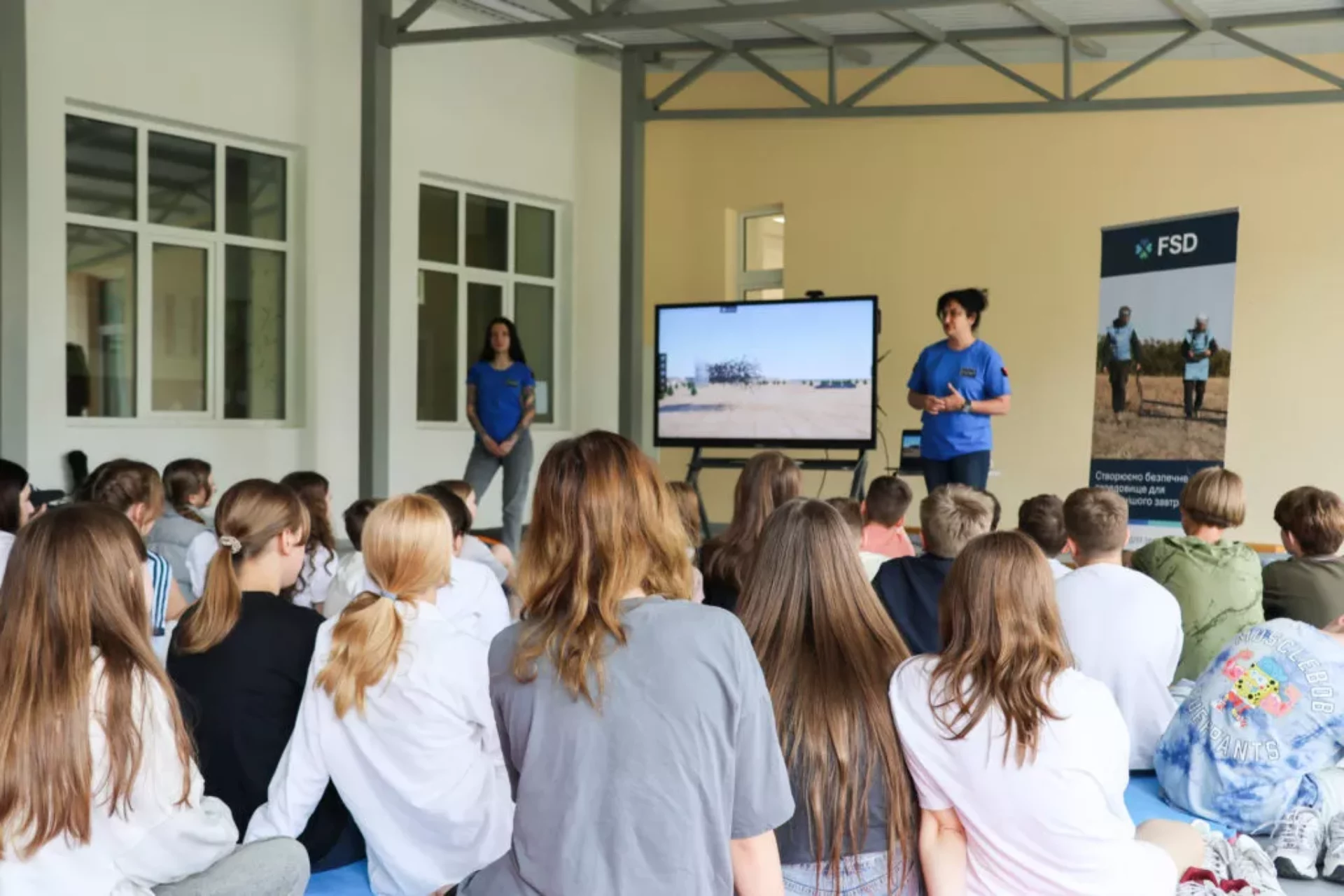Explosive ordnance risk education
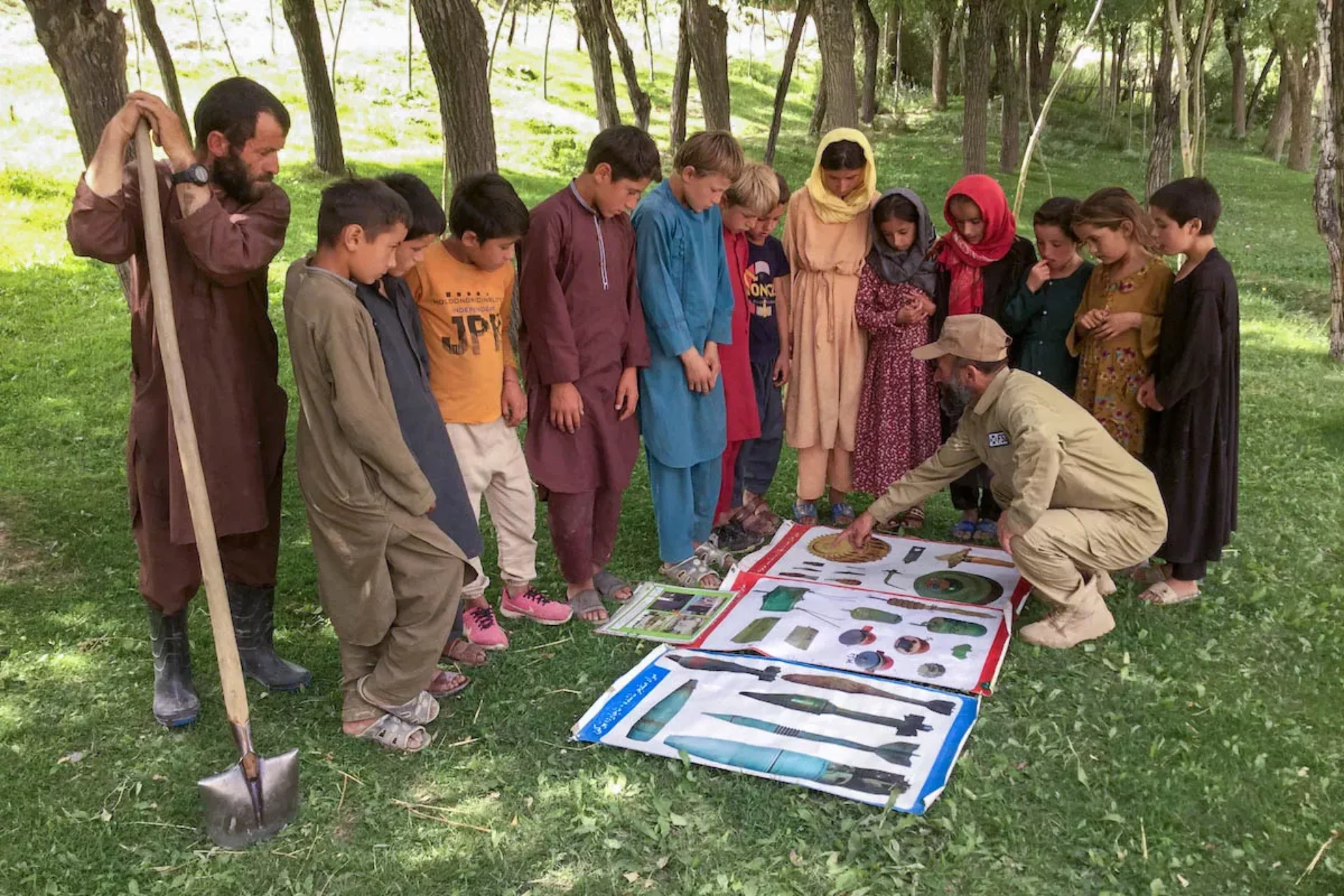
When danger is part of everyday life
Millions of people live in areas still contaminated by landmines and explosive ordnance. Until demining is complete, risk education activities remain the best way to prevent tragic accidents. Children, for example, may mistake ordnance for a toy, teenagers may approach it out of curiosity or as a dare, and some people, driven by poverty, may try to recover the metal to sell. Each story is different, but all highlight how essential education and awareness are to preventing further tragedies.
Raising awareness to save lives
To prevent accidents, FSD teams travel through towns, villages, and schools to educate communities about the dangers of explosive ordnance. Using booklets, posters, information boards, or even songs, they tailor their messages to each audience so that everyone knows the right precautions and can stay safe until demining is complete.
At the same time, FSD also runs targeted awareness campaigns on social media to spread these prevention messages more widely.
To learn more
View all
They learn to read, to write and to recognise unexploded ordnance
Polina, Nastia, and Sophia are between 8 and 9. They live in a village located in the province of Chernihiv,…
Children Prevention and risk education Ukraine

Accidental explosions: what are the high-risk behaviours?
While almost one in three countries in the world is contaminated by landmines and explosive remnants of war, thousands of…
Children Prevention and risk education Ukraine

Pastor and risk education volunteer
High up in the religious hierarchy in western Mindanao, he takes advantage of his visits to the various religious congregations…
Landmines and explosive remnants Prevention and risk education Philippines
And you, will you be able to spot the danger?
In forests, by the roadside, or in a field… can you identify mines and explosive ordnance?
